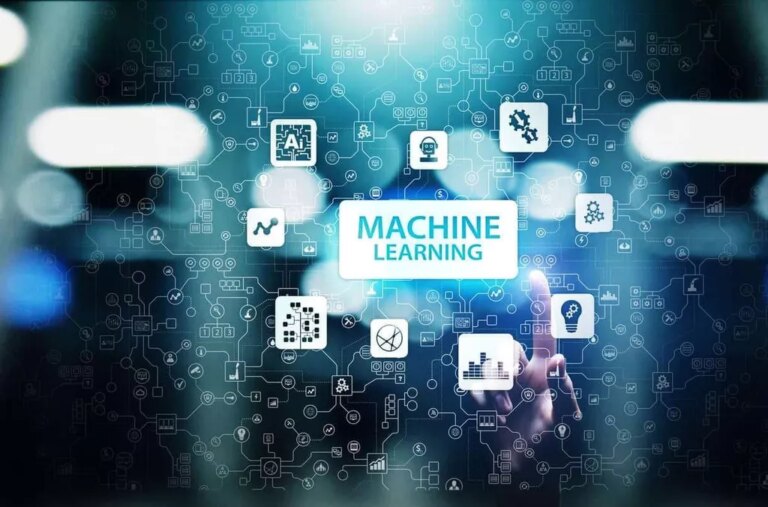The choice between SQL and NoSQL depends entirely on individual circumstances as both of them have advantages as well as disadvantages. SQL databases are long established with fixed schema design and a set structure. They are ideal for applications that require multi-row transactions such as an accounting system or for legacy systems that were built for a relational structure. However, NoSQL databases are much better suited for big data as flexibility is an important requirement which is fulfilled by their dynamic schema.
It’s not widely applicable, but the key-value store is perfect for use cases such as caching or storing session data. Probably the most straightforward NoSQL database is the key-value store. As its name suggests, the key-value store holds collections of key-value pairs. The value can be anything, from a numeric value to a complex object with sub-objects.
Key-value stores
SQL scales vertically when scaling data, meaning its systems require additional hardware or server resources to increase its processing power. SQL databases are older so they have a more established and fixed schema design and structure. Both SQL and NoSQL are used to categorize and communicate with different database management systems (DBMS), specifically relational and non-relational databases.

This will help you get a sense of which might be the right option for your specific use case. When considering the community support for each database type, SQL has broader community support due to its well-established community compared to NoSQL. There are many resources to learn SQL, including tutorials, courses, articles and documentation. Thus, NoSQL databases are typically well-suited for highly scalable applications.
MySQL vs MSSQL: Comparing Similarities and Differences
So what are the differences between SQL and NoSQL, and which database should you use for your next application? First, we’ll need to quickly explore the technical principles behind the two classes of databases so we can recognize what sets them apart to inform our future decisions. Ultimately, a technology is only valuable when it serves your business — especially with increased ROI.

For example, systems that support both traditional SQL as well as one (or more) NoSQL schema. Other systems may support multiple NoSQL data models, but not SQL. Relational databases are powerful because they can help you to better understand and work with your data. https://www.globalcloudteam.com/ For these reasons, relational databases are essential for many businesses and organizations. The debate between relational databases and NoSQL databases has been a hot topic for many years now. Both have their pros and cons, but which one is the best option?
When to use SQL vs NoSQL
If you need scalability and flexibility, then a NoSQL database may be a better choice. If you need ACID (atomicity, consistency, isolation, and durability) compliance and transactions, then a relational database may be a better choice. NoSQL databases are often lauded for their ability to run on cheap, general-purpose hardware and to scale horizontally. This can be a significant cost advantage over relational databases, which often require expensive, high-end special-purpose hardware to handle large volumes of data. Of course, this only applies if your data volume is large enough to warrant a distributed database in the first place.
- MySQL has also made concessions to NoSQL practitioners with features such as a JSON data type, the “Document Store,” and support for sharding (horizontal scaling).
- By proceeding below, I hereby agree to use LiveChat as an external third party technology.
- On the other hand, NoSQL databases are easily scalable, flexible and simple to use as they have no rigid schema.
- Let’s take a look at NoSQL and relational databases to see how they compare.
- If a database is maintained in one machine, a failure of that machine means a failure of the system as a whole.
- Wide-column data stores are scalable and can hold up to petabytes of data.
- Instead of the B-tree format common in traditional RDBMS, ScyllaDB uses a log-structured merge tree (LSM tree) storage engine that is more efficient for storing sparse data.
Time series data models are well understood and so are key values, which are not traditional SQL models. Put aside the concern for speed and scalability, both SQL and NoSQL databases provide versatile and efficient ways to query data. It is a must for a database because the accessibility when to use NoSQL vs SQL is of crucial importance as well. SQL databases provide great benefits for transactional data whose structure doesn’t change frequently (or at all) and where data integrity is paramount. There are plenty of decisions to be made when thinking about your cloud data storage.
Back-end Developers
This basically means that the poor database admins couldn’t find a table in NoSQL because there is no standard schema definition for NoSQL databases. They are either key-value pairs, document-based, graph databases or wide-column stores depending on the requirements. On the other hand, if those database admins had gone to a SQL bar, they certainly would have found tables as SQL databases have a table-based schema. SQL databases are great for structured data that can be organized into tables. They’re also good for data that requires transactions, like online shopping carts, bank transfers, and other types of data that need to be rolled back if something goes wrong.

Both technologies share the common goal of efficiently processing and managing data. In the end, I can’t say that SQL is absolutely better than NoSQL or the way around. Each one has its own advantages and disadvantages, and you should make your choice based on your data, its application and what makes the development process easier for you. One aspect you might consider is the current stage of development of the database technology.
Relational vs non relational database
If you ever need to change your data structure, it would be difficult and disruptive to your whole system. SQL is a domain-specific language used to query and manage data. It works by allowing users to query, insert, delete, and update records in relational databases.

In relational databases, data is stored in different tables, each containing multiple records (rows). These tables are connected to each other using one or more relations. SQL lets users add, remove and retrieve data from these rows within the database. At 74, Larry Ellison, co-founder and CTO of Oracle has amassed a fortune of $66.1 billion. He got going in 1966 and in the seventies took an idea from IBM’s Edgar F. Cobb for a SQL relational database.
The future of the data engineer — Part I
SQL databases are suited for applications where the integrity of the data is important. In this case, you want to have the maximum consistency, possibly by sacrificing a level of availability in comparison to NoSQL. Relational databases use their schema to describe the database and the types of data that it handles. There is a tradeoff here between ease of use for NoSQL databases versus the quality and consistency of data in SQL databases. SQL databases implement the Structured Query Language (SQL) to work with data.
